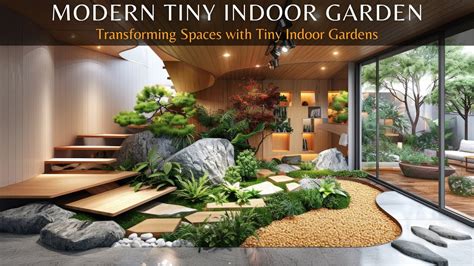Creating a Zen space at home is about fostering tranquility, simplicity, and balance. In our fast-paced world, having a serene sanctuary to retreat to can significantly enhance your well-being and peace of mind. This guide provides you with 10 inspiring ideas to transform your living space into a calming oasis. From decluttering and choosing neutral colors to incorporating natural elements and minimalistic furniture, each tip is designed to help you cultivate a soothing environment. Whether you’re looking to create a dedicated relaxation corner or simply want to infuse your home with a sense of calm, these ideas will guide you toward achieving the ultimate Zen atmosphere.
Investigate this topic thoroughly with shzow.com
1. Declutter and Simplify Your Space
Achieving a Zen space starts with decluttering and simplifying your surroundings. Clutter, both visual and mental, hinders relaxation and inner peace. Begin by removing anything unnecessary, keeping only items that serve a purpose or bring you joy. This minimalist approach fosters an open, airy feel, a key element in creating a Zen atmosphere. Organize your belongings to maintain clear surfaces and tidy spaces. Choose storage solutions that blend seamlessly with your decor, such as woven baskets, sleek cabinets, or hidden storage options. By simplifying your space, you create a calming environment that encourages a flow of energy, clarity, and mindfulness, all essential components of Zen living.

2. Choose a Neutral Color Palette
A neutral color palette is essential for achieving a Zen space that emanates calm and tranquility. Soft, muted hues such as beige, gray, white, and taupe establish the foundation for a serene environment, allowing the mind to relax and find focus. These colors mirror natural elements, creating a harmonious connection with the earth. When selecting paint, furniture, and decor, opt for shades that evoke a sense of warmth and comfort without overwhelming the senses. Neutral colors also provide a versatile backdrop, making it easier to incorporate other Zen elements like indoor plants, natural fabrics, and wooden accents. Embracing a neutral color scheme sets the stage for a peaceful, balanced space where you can unwind and recharge, free from the distractions of bold or busy patterns.

3. Incorporate Natural Elements
To cultivate a Zen atmosphere in your home, embracing natural elements is key. These elements, such as wood, stone, and bamboo, ground the space and connect it to the earth, fostering a peaceful environment brimming with warmth and tranquility. Start by introducing wooden furniture or accents, like a coffee table or shelves crafted from natural, unfinished wood. Incorporate stone features, such as a pebble-filled tray or a stone sculpture, to add texture and a calming presence.
To further embrace the natural essence, consider incorporating bamboo blinds or floor mats. These materials not only enhance the aesthetic appeal but also embody the simplicity and balance inherent in Zen design. Maximize natural light by keeping windows free from obstructions and opting for light, airy curtains. The ultimate aim is to create an environment that closely mirrors the tranquility of nature, where each element harmoniously contributes to relaxation, mindfulness, and overall well-being.

4. Use Minimalistic Furniture
Minimalistic furniture is a cornerstone of Zen design, contributing to the overall sense of calm and order in your space. The key to selecting the right pieces is to focus on simplicity, functionality, and clean lines. Opt for furniture that serves a purpose without overwhelming the room; think low-profile sofas, simple wooden tables, and sleek storage solutions. Each piece should contribute to the tranquility of the space, rather than clutter it with unnecessary detail.
Choose furniture made from natural materials like wood, bamboo, or rattan to maintain a connection with nature. These materials add warmth and texture while keeping the design grounded and organic. The colors of your furniture should align with the neutral palette you’ve established, ensuring that nothing feels out of place or distracting.
It’s also important to leave plenty of open space around your furniture to allow for easy movement and a sense of airiness. This openness helps to create a harmonious flow, which is essential in a Zen environment. Avoid overfilling the room with too many pieces; instead, embrace the idea that less is more. The goal is to create a space that feels balanced, uncluttered, and conducive to relaxation—a true sanctuary where you can escape the stress of daily life.
5. Create a Relaxation Corner
Creating a dedicated relaxation corner in your home is essential for fostering a Zen atmosphere. This space should be a sanctuary where you can retreat to unwind, meditate, or simply enjoy a moment of peace. Start by selecting a quiet, secluded area that receives natural light, if possible. Furnish it with a comfortable chair, floor cushion, or yoga mat, depending on your personal preferences and the space available.
Incorporate soothing elements like soft throws, pillows, and a small table to hold items that enhance relaxation, such as a candle, a favorite book, or a cup of tea. Keep the design simple and uncluttered, staying true to the minimalist aesthetic of a Zen space. Consider adding a small indoor plant or a piece of artwork that inspires calm and positivity. By dedicating a corner of your home to relaxation, you create a personal refuge that supports mindfulness and tranquility in your daily life.
6. Add Soft Lighting
A Zen atmosphere thrives on soft lighting, its warm embrace creating an inviting ambiance that encourages relaxation and peace. Harsh, bright lights, on the other hand, can feel jarring and disrupt the tranquility of a space. To ensure a calming environment, opt for gentle, diffused lighting. Lamps with soft, warm-toned bulbs, emitting a natural, soothing glow, are ideal. Floor lamps, table lamps, and wall sconces equipped with dimmers allow you to fine-tune the light intensity, catering to your needs and mood.
Embrace natural light by keeping window treatments minimal and airy, allowing sunlight to softly illuminate the room. Candles are a wonderful way to introduce soft, flickering light, creating a sense of tranquility in your Zen space. Arranging candles of different sizes together forms a beautiful, calming focal point. Alternatively, consider using paper lanterns or Himalayan salt lamps for their warm, diffused light, which perfectly complements the minimalist, nature-inspired aesthetic of a Zen space. By carefully selecting soft lighting, you can transform your home into a serene haven where you can truly unwind.
7. Integrate Aromatherapy
Aromatherapy can infuse your Zen space with tranquility, promoting relaxation through the power of scent. Essential oils have the ability to transform the atmosphere of your home, creating a calming environment that nurtures mental and emotional well-being. To start, choose a few essential oils known for their soothing properties, like lavender, chamomile, or sandalwood. These scents are renowned for their ability to reduce stress and evoke a sense of peace.
To create a soothing atmosphere, use a diffuser to gently disperse essential oils throughout your space. This will create a subtle aroma that fills the room without being overpowering. Alternatively, place essential oil-infused candles or reed diffusers in strategic locations within your Zen space for a more refined approach. Further enhancing the calming effects of your relaxation corner, aromatherapy can transform it into an ideal sanctuary for meditation or unwinding after a busy day.
Explore a variety of scents to discover what appeals most to you and enhances the ambiance of your home. By incorporating aromatherapy with care, you introduce an added element of tranquility and contribute to a genuinely serene Zen setting.
8. Include Indoor Plants
Infusing your home with indoor plants is a natural way to cultivate a Zen atmosphere, bringing the tranquility of nature indoors. Not only do plants improve air quality, but they also introduce a calming, organic element to your space. Opt for low-maintenance varieties like snake plants, peace lilies, or pothos, which thrive indoors with minimal care and adapt well to different light levels.
To enhance your neutral color palette and minimalist design, arrange plants in decorative pots that complement your aesthetic. Position them strategically in corners, on shelves, or near windows to create visual interest and balance within the room. Grouping plants of varying heights and textures adds depth and a touch of natural beauty, contributing to the overall Zen atmosphere of your space.
Adding plants to your relaxation corner or other important spaces can significantly enhance the overall sense of tranquility. The presence of greenery creates a link with nature, fostering a peaceful and harmonious atmosphere that promotes relaxation and mindfulness.
9. Use Natural Fabrics and Textures
A Zen space thrives on the tranquility found in natural fabrics and textures. These materials, such as cotton, linen, wool, and bamboo, contribute to the overall serenity by adding warmth and a tactile dimension that complements the minimalist design. This not only fosters a soothing and grounded atmosphere but also aligns with environmentally friendly practices, as these natural fibers offer a soft, comfortable feel that enhances relaxation.
Bring in natural fabrics like linen and wool through throw blankets, cushions, and area rugs. Select items with subtle textures and neutral tones to create a cohesive and peaceful ambiance. For example, a linen throw draped on a sofa or a wool rug on the floor can add layers of comfort and visual interest without overwhelming the room.
Natural textures, whether from wood or stone, amplify the organic feel of your decor. Simple, unpolished wooden furniture or stone accents like coasters or vases bring a touch of nature’s essence and depth to your living space.
Thoughtful integration of natural fabrics and textures creates a harmonious and inviting space. This environment promotes relaxation and fosters a deeper connection with the natural world.
10. Incorporate Elements of Water
Incorporating elements of water into your Zen space can enhance its calming and restorative qualities. Water features add a soothing auditory and visual component that promotes relaxation and tranquility. Consider including a small indoor fountain or a tabletop water feature. The gentle sound of flowing water can create a peaceful ambiance, masking background noise and providing a meditative quality to your space.
Another way to integrate water elements is by using aquariums with low-maintenance fish or water plants. These can serve as a living piece of art, bringing movement and serenity into your home. Alternatively, decorative water bowls or glass vases filled with water and floating candles can offer a simple yet elegant touch.
Reflective surfaces, such as mirrors or glass, can also enhance the feeling of water in your space. Positioning mirrors strategically can help to amplify natural light and create a sense of openness.
By thoughtfully incorporating these water elements, you add a dynamic, refreshing aspect to your Zen space, supporting a peaceful atmosphere and enhancing your overall sense of well-being.
Incorporating elements of water into your Zen space can enhance its calming and restorative qualities. Water features add a soothing auditory and visual component that promotes relaxation and tranquility. Consider including a small indoor fountain or a tabletop water feature. The gentle sound of flowing water can create a peaceful ambiance, masking background noise and providing a meditative quality to your space.
Another way to integrate water elements is by using aquariums with low-maintenance fish or water plants. These can serve as a living piece of art, bringing movement and serenity into your home. Alternatively, decorative water bowls or glass vases filled with water and floating candles can offer a simple yet elegant touch.
Reflective surfaces, such as mirrors or glass, can also enhance the feeling of water in your space. Positioning mirrors strategically can help to amplify natural light and create a sense of openness.
By thoughtfully incorporating these water elements, you add a dynamic, refreshing aspect to your Zen space, supporting a peaceful atmosphere and enhancing your overall sense of well-being.
shzow.com
